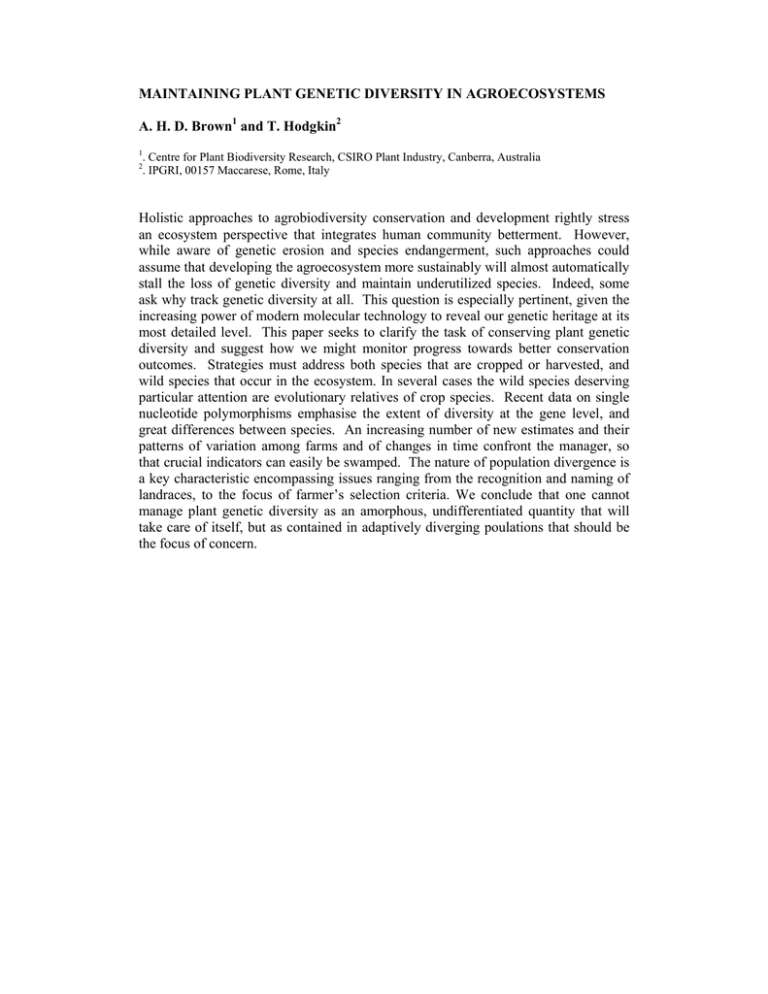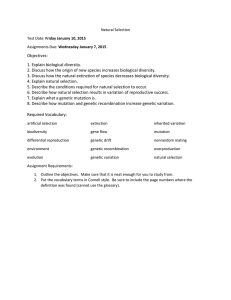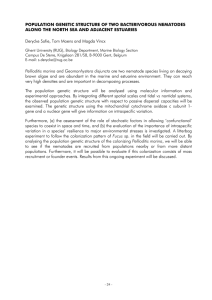MAINTAINING PLANT GENETIC DIVERSITY IN AGROECOSYSTEMS A. H. D. Brown
advertisement

MAINTAINING PLANT GENETIC DIVERSITY IN AGROECOSYSTEMS A. H. D. Brown1 and T. Hodgkin2 1 2 . Centre for Plant Biodiversity Research, CSIRO Plant Industry, Canberra, Australia . IPGRI, 00157 Maccarese, Rome, Italy Holistic approaches to agrobiodiversity conservation and development rightly stress an ecosystem perspective that integrates human community betterment. However, while aware of genetic erosion and species endangerment, such approaches could assume that developing the agroecosystem more sustainably will almost automatically stall the loss of genetic diversity and maintain underutilized species. Indeed, some ask why track genetic diversity at all. This question is especially pertinent, given the increasing power of modern molecular technology to reveal our genetic heritage at its most detailed level. This paper seeks to clarify the task of conserving plant genetic diversity and suggest how we might monitor progress towards better conservation outcomes. Strategies must address both species that are cropped or harvested, and wild species that occur in the ecosystem. In several cases the wild species deserving particular attention are evolutionary relatives of crop species. Recent data on single nucleotide polymorphisms emphasise the extent of diversity at the gene level, and great differences between species. An increasing number of new estimates and their patterns of variation among farms and of changes in time confront the manager, so that crucial indicators can easily be swamped. The nature of population divergence is a key characteristic encompassing issues ranging from the recognition and naming of landraces, to the focus of farmer’s selection criteria. We conclude that one cannot manage plant genetic diversity as an amorphous, undifferentiated quantity that will take care of itself, but as contained in adaptively diverging poulations that should be the focus of concern.











